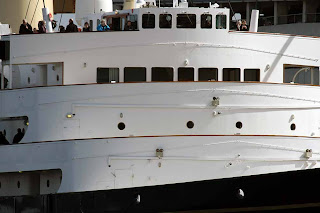Tower
Bridge on the River Thames, one of London’s icons was opened for Fram to pass
to her overnight mooring. Celebration
drinks were served on deck. Crowds
waved from the shore, their daily
business stopped while we passed.
The
photos show the story of the journey upstream England’s longest river: Industry, the Thames Barrier, the Millenium
Dome, Greenwich College and Park, the
Cutty Sark, the new Shard building and finally the Bridge itself.
A quick
dinner, then guests set out to see London by night. A great end to a cruise.





















































